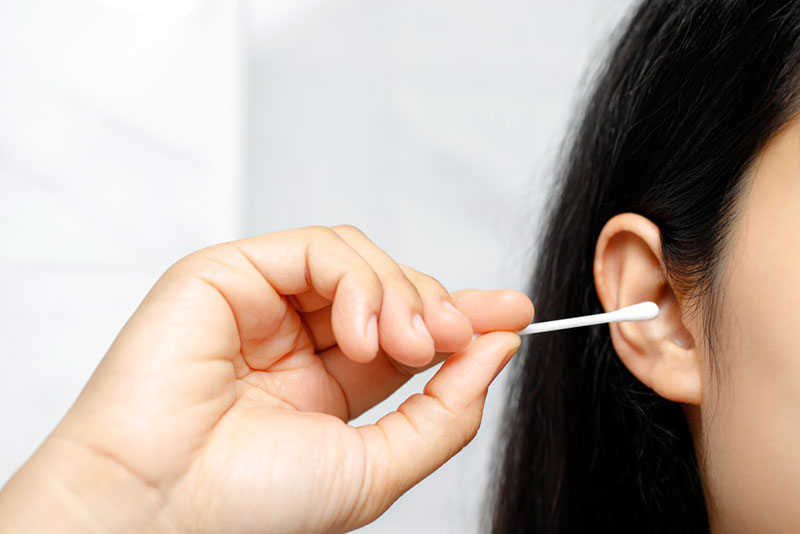The ears constitute an important part of our auditory system, an important sense organ that helps balance body positioning. Ears can get clogged up because of too much earwax (cerumen). Earwax may cause complications when accumulated in excess, as it can block the external auditory canal or hearing aids and hinder hearing. Earwax is a yellowish-waxy substance that helps protect the ear canal’s skin and assists in lubrication. Moreover, earwax helps fight against bacteria, fungi, insects, and water.
Types of ear wax-induced ear infections:
An ear infection develops if earwax is lodged in your ear canal in excess. Earwax may cause discomfort and pain if it touches your eardrum. Below are some complications patients have reported after having ear irrigation or earwax:
- Otitis externa (swimmer’s ear, a bacterial infection)—This condition creates infection in the ear or outer ear canal. It causes itching or redness and swelling of the ear. Swimmer’s ear is very painful and may also lead to the formation of liquid pus.
- Acute otitis media—This type of ear infection is very painful. Some symptoms include redness of the eardrum, pus in the ear, and fever.
- Otitis media with effusion—This type of ear infection develops when fluid builds up in the middle of the ear without any signs or symptoms. It is more common than acute otitis media and is commonly caused by allergies, viral upper respiratory infections, or exposure to irritants (such as cigarette smoke).
It has been reported that about 1 in 1,000 people get serious complications due to earwax. They may have to suffer:
- Severe infection—Severe conditions occur rarely; if the infection progresses to the base of the skull and causes meningitis (infection of the protective membranes surrounding the brain) and cranial paralysis, it can lead to death. Severe infection affects older adults with weak immune systems and people with diabetes.
- Chronic tinnitus– This long-term condition sometimes requires earwax removal or ear irrigation. However, this is also very rare.
Ways to clean your ears:
Earwax is a natural substance that helps protect the ear canal from external properties like dirt, bacteria, and other things. However, an ideal cleaning procedure should be followed when earwax clogs and causes hearing difficulties or discomfort. Below mentioned tips or techniques may help in removing earwax from your ears:
Cleaning ears at home:
There are various safe techniques that you may apply while cleaning your ear at home; these are described below:
- Ensure you don’t have an ear infection – Do not try to clear excess earwax if you have already developed an ear infection because it may lead to a perforated eardrum. Cleaning your ears under the circumstances of infection can be extremely dangerous. If you have an infection, then schedule a medical appointment immediately. Symptoms of an ear infection include fever, vomiting or diarrhea, persistent and severe ear pain, or green or yellow drainage from the ears.
- Make wax-softening solution – To soften the earwax, purchase a carbamide peroxide cleaning solution from your local pharmacy or make your own. Prepare warm water with a teaspoon of 3-4% hydrogen peroxide solution, mineral oil, or glycerine.
- Prepare an applicator—If you don’t have one, you can pour the solution into your ear. If you have one, you can fill a plastic syringe with a plastic tip or an eyedropper with the solution.
- Tilt your head to the side – The cleaning process will work best if your ear canal is vertical. If you are uncomfortable tilting your head sideways, you can lie down on your side for at least 5 to 10 minutes. If you have used hydrogen peroxide, allow the solution to work until you no longer hear fizzing or popping sounds.
- Drain the fluid – Hold an empty bowl under your ear, or put cotton up to the outside of your ear. Don’t try to push the cotton into your ear; hold the cotton lightly against the outside of the ear to catch the fluid.
- Flush your ears – If the earwax is softened, a rubber bulb syringe can flush loose earwax. You should gently squirt lukewarm water into your ear canal.
Medicinal remedies:
If you do not find any relief from the above process or are having difficulty performing the above tips, rush to your ENT specialist. He/she will perform a proper procedure to flush out the earwax from your ears.
- Visit your doctor– If you can’t clear the blockage yourself, visit a doctor. After examining your ear, he can tell you whether you have a blockage.
- Relax– Finally, this is a relaxing time for you. The doctor may treat your ears with a water pick or a bulb-type syringe to clean out small blockages. He may also use an instrument called a curette to remove larger blockages partially. Moreover, if these instruments do not work, then he may perform suction therapy to remove the blockage. This procedure will not hurt you a bit, and in just a few minutes, your ears will be safely and thoroughly cleaned.
How to prevent excess earwax blockage?
You can prevent excess earwax blockage by performing the below-mentioned techniques:
- To prevent earwax blockage, moisten it by frequently running water into your ear during a bath. This process will help you prevent the earwax from getting dried. Always drain the water from your ears after running it for some time.
- Try to include omega-3 fatty acids in your diet because they are good for mitigating the problem of ear wax. To fulfill your need for omega-3 acids, include walnuts, salmon, avocados, and ground flax seed.
Amelia Smith
Latest posts by Amelia Smith (see all)
- Careprost for Fuller Eyelashes - July 11, 2024
- Tips to Get Longer Eyelashes - July 10, 2024
- Tips to Boost Eyelash Growth - April 8, 2024




